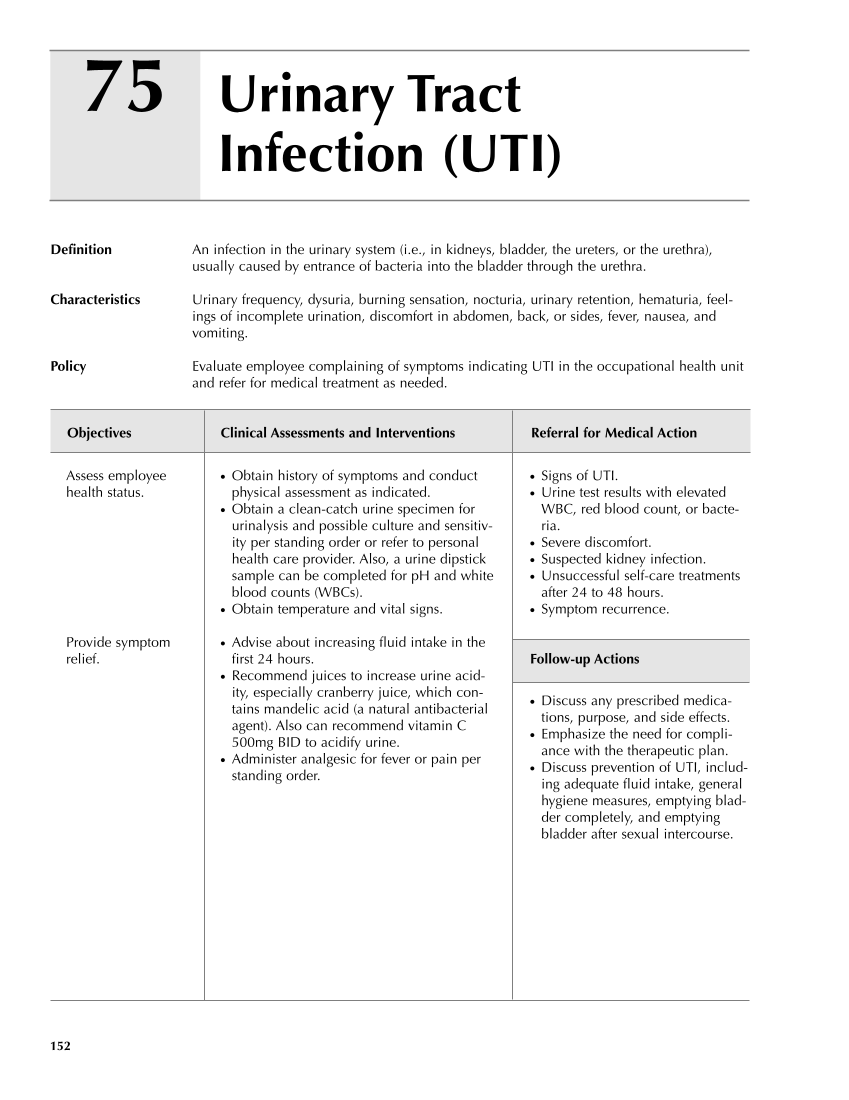75 152 Definition An infection in the urinary system (i.e., in kidneys, bladder, the ureters, or the urethra), usually caused by entrance of bacteria into the bladder through the urethra. Characteristics Urinary frequency, dysuria, burning sensation, nocturia, urinary retention, hematuria, feel- ings of incomplete urination, discomfort in abdomen, back, or sides, fever, nausea, and vomiting. Policy Evaluate employee complaining of symptoms indicating UTI in the occupational health unit and refer for medical treatment as needed. Objectives Clinical Assessments and Interventions Referral for Medical Action Urinary Tract Infection (UTI) ● Signs of UTI. ● Urine test results with elevated WBC, red blood count, or bacte- ria. ● Severe discomfort. ● Suspected kidney infection. ● Unsuccessful self-care treatments after 24 to 48 hours. ● Symptom recurrence. Follow-up Actions ● Discuss any prescribed medica- tions, purpose, and side effects. ● Emphasize the need for compli- ance with the therapeutic plan. ● Discuss prevention of UTI, includ- ing adequate fluid intake, general hygiene measures, emptying blad- der completely, and emptying bladder after sexual intercourse. Assess employee health status. Provide symptom relief. ● Obtain history of symptoms and conduct physical assessment as indicated. ● Obtain a clean-catch urine specimen for urinalysis and possible culture and sensitiv- ity per standing order or refer to personal health care provider. Also, a urine dipstick sample can be completed for pH and white blood counts (WBCs). ● Obtain temperature and vital signs. ● Advise about increasing fluid intake in the first 24 hours. ● Recommend juices to increase urine acid- ity, especially cranberry juice, which con- tains mandelic acid (a natural antibacterial agent). Also can recommend vitamin C 500mg BID to acidify urine. ● Administer analgesic for fever or pain per standing order. Guideline continues on next page
Purchased from OEM Press by (ge corporate access). (C) 2013 OEM Health Information, Inc. All rights reserved.












































































































































































































































































































































































































































